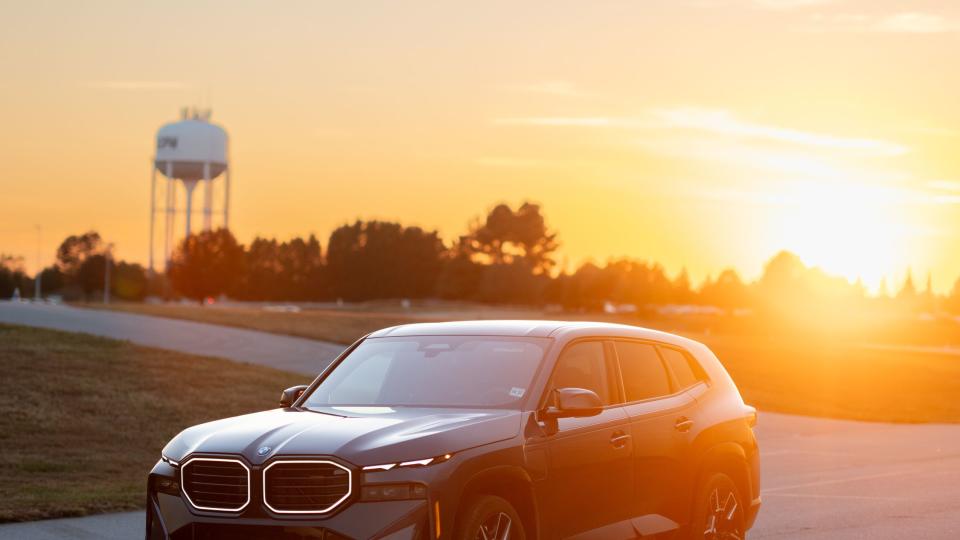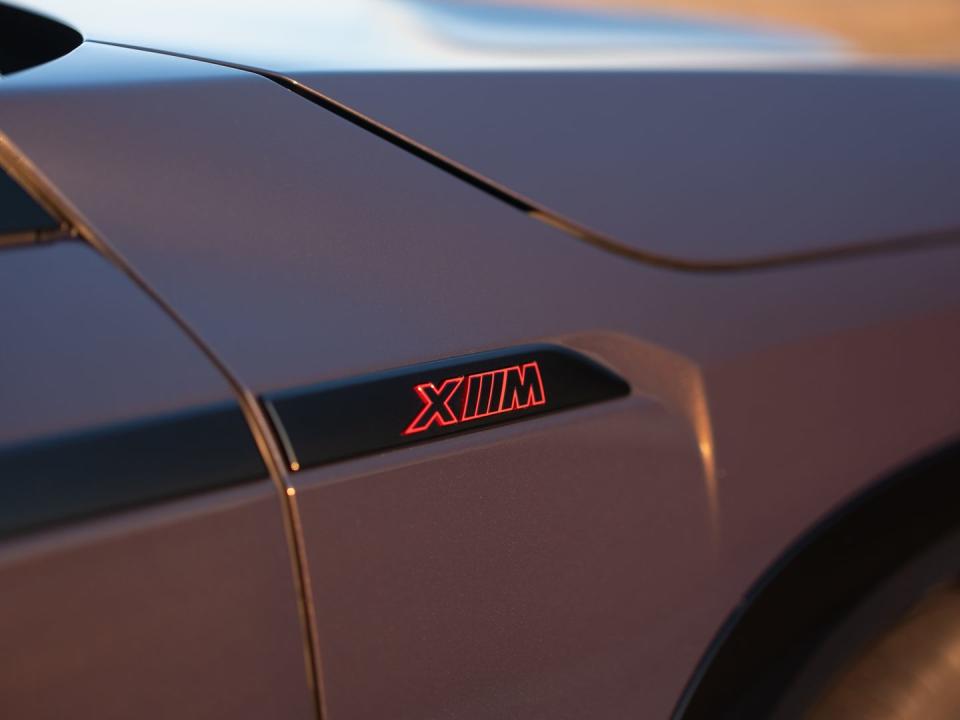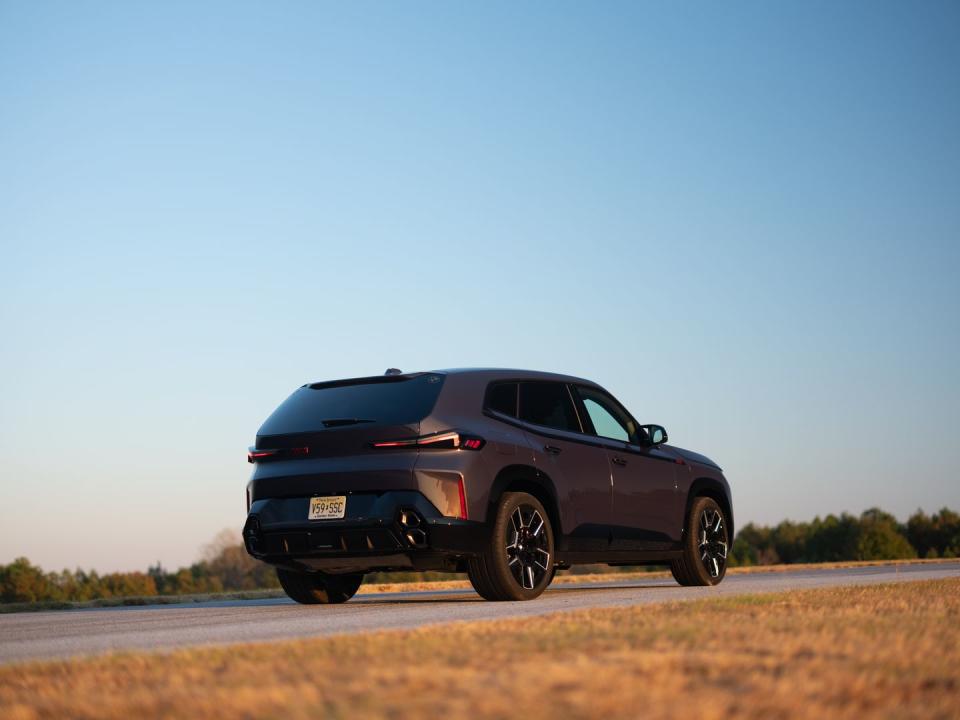Why Would Anyone Buy the BMW XM Label?

After 20 minutes or so, I got a headache. I'm driving the new 2024 BMW XM Label, a giant, 738-hp hybrid SUV, only the second dedicated model to come from BMW M, and something about it doesn't make me feel great. On a bad concrete road just outside Greenville, South Carolina not far from where the XM is built, there's a resonance through the cabin that's almost deafening. Admittedly, this is a very poor road surface, but come on, the XM Label is a $191,895 luxury vehicle.
While many groaned when BMW M released this big, avant-garde SUV, I wasn't about to dismiss it. First off, I've instituted a policy of never commenting on BMW design from the outset because usually, the things tend to grow on me and lots of people like them. Second, BMW's SUVs are typically excellent.
There is substance here. The XM is BMW M's first plug-in hybrid, combining M's long-running 4.4-liter twin-turbo V-8 with an electric motor placed between engine and eight-speed gearbox. In this top-spec "Label" version, the V-8 makes 577 horsepower and combines with the electric motor for a system output of 738 hp and 738 lb-ft of torque. The motor makes 194 hp and 207 lb-ft of torque on its own, and it's driven off a 19.2-kWh battery pack that provides 30 miles of electric-only range. And know that this, or something very similar, will be the running gear for the next M5.

The XM is about the size of the three-row X7, though it rides lower and seats only five. BMW positions the XM as not being the last word in performance for an SUV, but something of a luxury grand tourer aimed at the higher end of the SUV marketplace. The Label version—which was originally going to be called Label Red until someone realized that was silly—is essentially the same as the 644-hp base model, but with a similar engine spec as the M5 and M8, a unique black-and-red interior trim, and a gratis selection of BMW Individual color choices.
Initial impressions are at least good. The XM starts off in all-electric mode, and the motor feels like it has more than enough torque to move around 6000-plus-pounds of SUV in town. However, things quickly get strange. The integration between engine and e-motor is generally solid, but the handoff between the two is occasionally clunky. The V-8 also sounds quite odd. For years now, BMW M has employed a unique exhaust manifold in its V-8s with evenly spaced pulses across cylinder banks, which helps keep the turbos spooled and leads to a sound similar to a flat-plane unit. In the XM, it's this weird, but distant blare, and combined with the resonance from what I assume comes from the tires, it creates a very unpleasant sound signature.
My XM tester rode on 22-inch wheels—23s are available at no cost for the Label—and Yokohama tires. BMW also uses Pirelli P-Zero PZ4 tires for the XM and while I didn't have a chance to drive a car so equipped, previous experience with that tire suggests it might not be so noisy. Still, there's only so much quiet one can expect with huge wheels and tires.

One of the odder choices made for the XM is the use of conventional coil-spring suspension, when all of its competitors use air springs. (Even the X5 M and X6 M offer air springs as an option.) The XM Label rides somewhat firmly even with the adaptive dampers set to Comfort, which I suppose could be expected for a big, heavy, SUV on big, heavy wheels, but that's not the case with others. The air-sprung Porsche Cayenne Turbo E-Hybrid rides beautifully while maintaining excellent handling. The XM is supposed to be a luxury-GT sort of thing. It doesn't need to ride like an M3.
It is, of course, very fast, almost disorientingly so. And a standard active anti-roll bar system means that it handles corners with unusual aplomb. Still, it can't help mask the transparent size and weight of the XM and that’s felt under braking and acceleration.
As a driving experience, we're left with something that isn't quite a particularly good luxury vehicle, nor a super fun performance car. And inside, it's underwhelming for the price. BMW does great interiors, the new 7-Series is proof, but the XM Label doesn't feel special enough for its $185,995 base price. There's really nothing wrong with the cabin, but sit in a 7-Series and then this and tell me which one's better.
After an hour's drive, I left the XM Label confused. It doesn't excel in any particular area and certainly doesn't meet all of BMW's high standards. The looks and transparent presence will be enough to sell the XM, and the performance is undeniable, but beyond that, I couldn't help but wonder why anyone would buy it. Especially when BMW North America also sells the excellent Alpina XB7 for a starting price of $150,395.
My head hurts just trying to understand it.
You Might Also Like

 Yahoo Autos
Yahoo Autos 